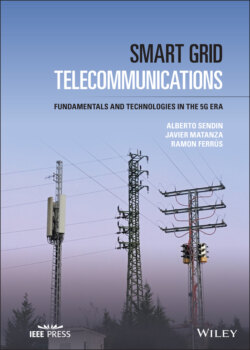Читать книгу Smart Grid Telecommunications - Ramon Ferrús - Страница 46
1.6.7 Distributed Intelligence
ОглавлениеThere has been a recurrent discussion in utility industry around the IT and Telecommunication aspects of ICTs, when it comes to the availability of both in grid asset sites.
Computing power and telecommunications have been at large scarce resources. This fact, connected to the evolution of some traditional control system applications (i.e., SCADA), has configured different historical trends when deciding if system intelligence had to be distributed or centralized.
If we take the IT component, processing power has been expensive and bulky in the old times. At the same time, SCADAs started at power plants and PSs to automate operations locally (see Chapter 5) and that long‐distance Telecommunications were not readily accessible in many remote areas. These circumstances created an electric power system control structure that installed part of its computing power in distributed premises (substations).
However, the expansion of telecommunication capabilities, combined with the size reduction of computing power and the enhanced automation capabilities of evolving SCADAs, pushed a wave of SCADA system concentration that leveraged the cost savings produced by synergies in the SCADA operations. Thus, distributed intelligence started to diminish.
SCADA evolution was parallel to remote meter reading systems. The situation of these systems changed the perspective of the telecommunications access to substations. From the need to access a few PSs of early SCADAs, to the need to access many SSs where high‐throughput connectivity was not affordable, changed again the approach. At this point, the idea of “data concentrators” (see Chapter 5) appeared, as a way to downsize central MDM systems with a certain distributed intelligence.
Those two parallel stories of Smart Grid systems embryos, different in the use of ICT components, have reached our days, and numerous initiatives in Smart Grids show the influence of both.
In the telecommunications domain, the availability of high‐throughput connectivity is common today, and telecommunication bottlenecks are not to be expected in urban, suburban, or populated rural areas. Thus, the distributed intelligence concept is no longer generally a must. On the contrary, the general availability of communications to access all SSs leaves the decision on where to place computing power to utilities.
However, telecommunications themselves, and for their purpose of adapting to the various market needs, are witnessing two trends or types of systems in their evolution:
Internet of Things (IoT)‐type of connectivity, as a connectivity intended to provide some sort of low‐end telecommunication capabilities to any location.
Telecommunications network intelligence closer to the network end‐points, helping to provide low latency services that might be demanded by some users.
Thus, another level of complexity is added to the Smart Grid distributed intelligence discussion that should consider these new trends of telecommunications market.
